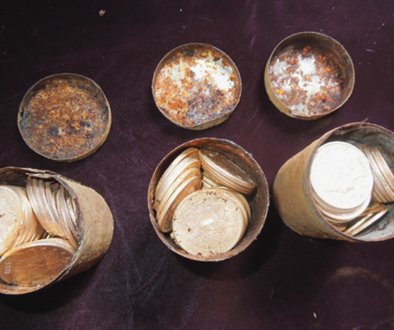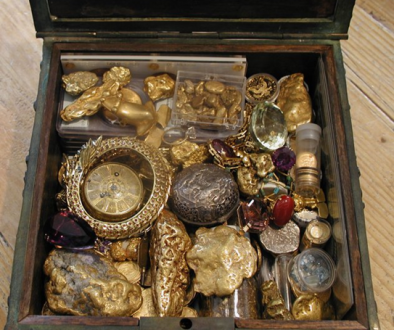Going on a Treasure Hunt Week 4 of 4
In 2016, 233 million people around the world went on a treasure hunt. To some of us, the treasure they were looking for may not have been worth much, but to those nearly quarter of a billion people spending time looking for their treasure, it wasn’t only worth it, it was also a lot of fun.
What they were looking for was Pokemon. In case you’ve never heard of a Pokemon, let me try to explain in as simple a way I can. According to Dictionary.com, it is “a series of Japanese video games and related media such as trading cards and television programs, featuring cartoon monsters that are captured by players and trained to battle each other.”

Pikachu
The most famous Pokemon is Pikachu, which kind of looks like a yellow rabbit and has a lightning bolt for a tail. There is Squirtle, which looks like a turtle. Snorlax looks like a blue and white hibernating bear-like creature that is really good at sleeping. There’s Charmander, Bulbasaur and of course, Jigglypuff. There are hundreds of different Pokemon and in many of the games and movies, the person trying to catch and train the Pokemon is a character named Ash Ketchum.
For twenty years, Pokemon were restricted to your hand-held device such as a Gameboy, on the face of a trading card or the movie or tv screen. But in 2016, all that changed when Nintendo released an app called Pokemon Go. About 1 billion people downloaded it.
When opened, the player’s phone showed a Pokemon-themed world that utilized the phone’s GPS. As the players walked through their neighborhoods, parks and communities, they were also moving through the screen looking for the hidden Pokemon. When they got close, the Pokemon would appear on the screen and players could use the Pokeballs they had collected to capture them.

The Pokemon Go screen showing which Pokemon are close by © HuffPost
To the folks who had no idea what Pokemon Go was, it looked like all kinds of people wandering aimlessly about holding their cell phones in their hands. But to the players, they were using their phone to track treasures hidden throughout their town.
Humans have been tracking things forever. We’ve been tracking things mostly because we’ve been trying to eat. Early humans, looking for their dinner, started to pick up the clues left behind by the prey they were seeking. The most obvious clue was the animal’s track. Different species have distinct footprints. Early hunters started memorizing the shape of the animal’s foot. They analyzed how far apart the footprints were. The farther apart, the bigger the animal or the faster it was moving. But trackers didn’t stop there.
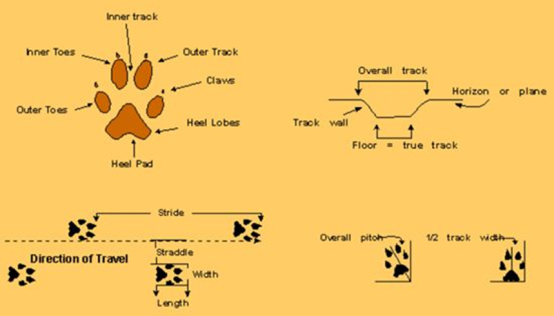
Understanding all aspects of an animal’s track © Pinterest
Early trackers looked for any and all signs of animals in their quest to find them. They looked for marks indicating the drag of a tail or the slither of a snake. They looked for poop left behind. They looked for snapped twigs and chewed leaves, any sign that an animal may have been in the area. The crispness of the footprint determined how long it had been since the animal passed. The temperature of the poop offered a clue as to how long since it had been pooped. The job of the tracker was to be as observant as possible and notice any and every sign that was left behind by an unsuspecting critter.
Perhaps the most famous trackers of all time are the San people of the Kalahari. For eons, the San would track their prey using an incredibly deep understanding of their desert home. Their hunter-gatherer abilities supported their people and their culture for thousands of years. But as times have changed, fences went up, migration patterns altered and economic pressures mounted, the San needed to adapt.
In the 1990’s representatives of the San reached out to Louis Liebenberg, who grew up in South Africa and started tracking animals at an early age. He became an expert tracker and had written several books on how tracking was the first science. The San needed jobs since their traditional hunter-gathering lifestyle was under threat. Liebenberg realized that the San could use their tracking knowledge to help with scientific studies, ecotourism, and conservation projects. But the San couldn’t read, so Liebenberg helped develop a hand-held device that used icons to provide the San with a way to keep track of their tracking.
CyberTracker was born and today it provides tracking software and training to people around the world to help in the detection and protection of elusive species.
The Saola Foundation has teamed up with CyberTracker to teach our Lao team how to track animals in the Annamite Mountains. The species they are focused on qualifies as one of the most elusive—the saola.
Lee Gutteridge, one of CyberTracker’s Senior Trackers, has been in Laos training our team of local people how to become trackers. Fortunately, the trackers actually know what a saola track looks like. The body of a saola, once captured for a private menagerie, has been preserved. The team was able to take casts of that saola’s hooves.
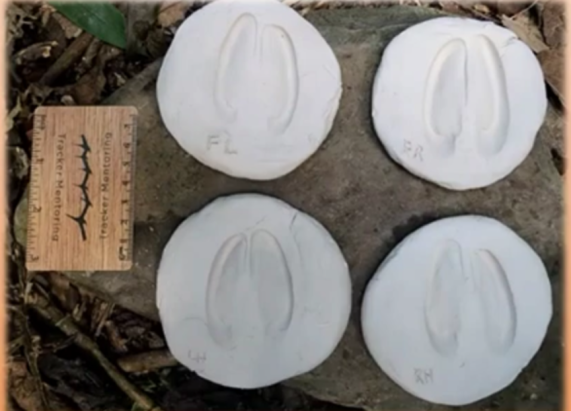
Casts showing what a saola track looks like © Lee Gutteridge
In a recent talk, Lee explained that he has been around the world teaching people how to track animals, but he admitted that Laos is one of the most difficult. It was his first time in the steep, dense forests of the Annamites. It was his first time experiencing the leeches that come with every experience in the Laos jungle.
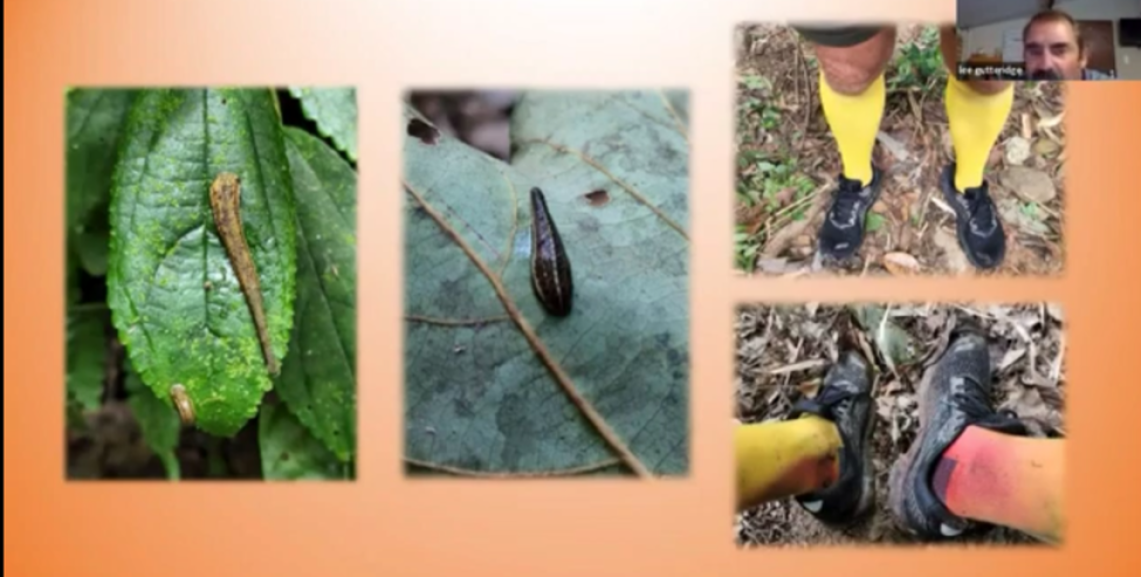
Lee’s yellow socks turned red after encountering Lao leeches © Lee Gutteridge
While tracking is effective, it also has its shortfalls. Even the best trackers can lose their trail of clues. So the trackers are being paired with the dog handlers that I told you about last week. Working together they have double the chance of finding and keeping the trail. When the dog loses the scent, the tracker can stand back and look for visual clues to reestablish the pursuit.
During the training period, the team came across an interesting track. They took a cast of it and compared it to the cast that came from the once-captured saola. They can’t confirm it’s a saola track but it did give them hope. You be the judge.
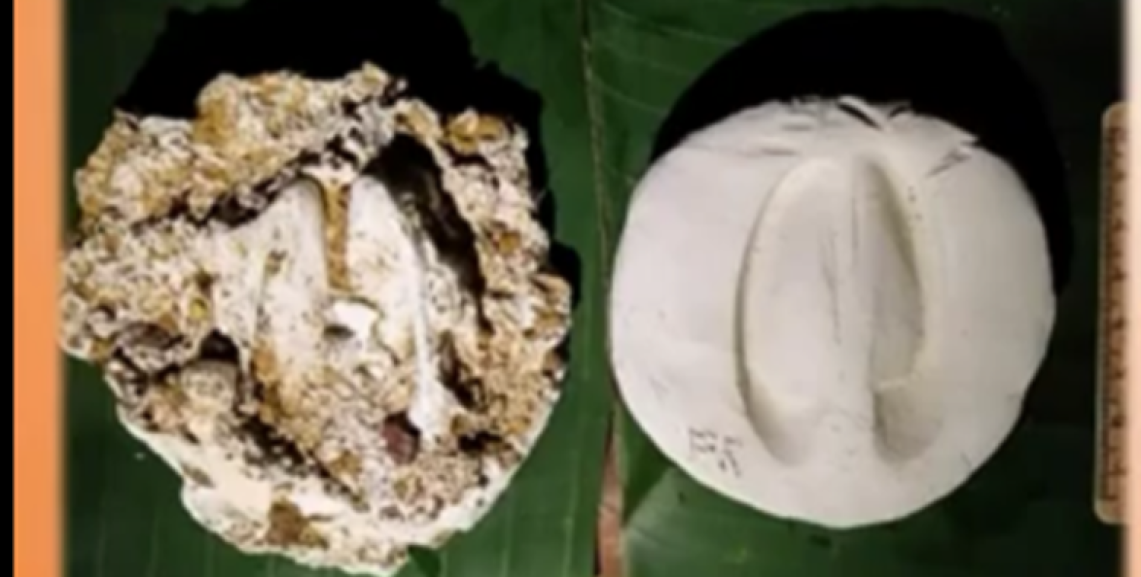
The cast of an track found by the team along with the cast of a saola print
For the last 4 weeks, I have been telling you about one of the greatest treasure hunts of all time. One of the key ingredients in any hunt of this kind is a deep belief and eternal hope that you will in fact find the treasure. It would be easy to give up on the saola. But history tells us that the people who find the treasure are the ones who never give up. Based on the picture of the print that the Lao trackers found, I like to think, and eternally hope, that we’re on the right track.
Just because “Going on a Treasure Hunt” is ending, you can still follow the Saola story by signing up for the newsletter at www.saolafoundation.org.
I hope you have enjoyed this series and will donate to the Saola Foundation to help pay for one day of the hunt. My wife and I have donated $1,000 towards the cause and are hoping to fund at least 2 weeks of the search by enlisting the help of friends like you. To donate, go to www.saolafoundation.org.
Thank you.


